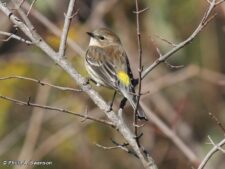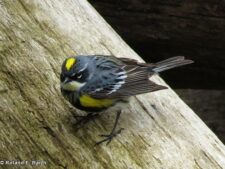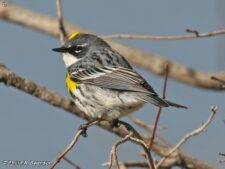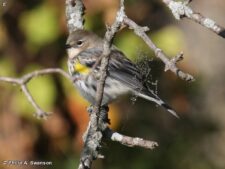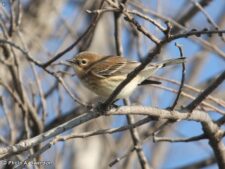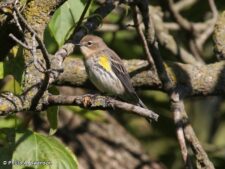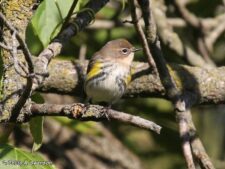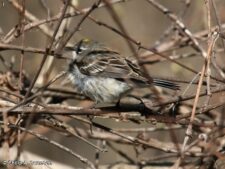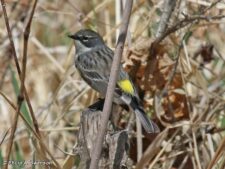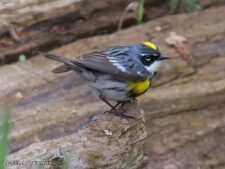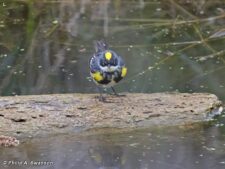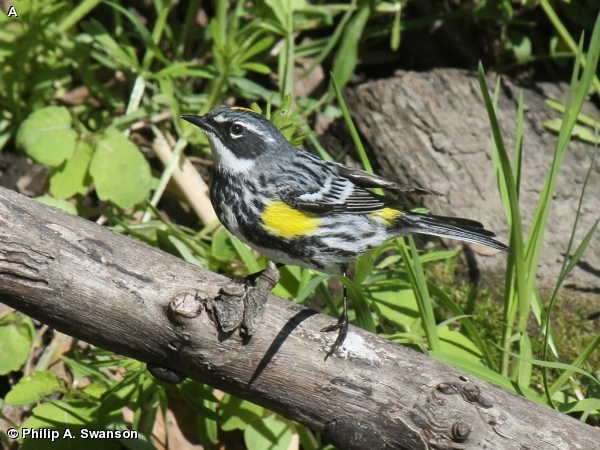
5.50 inches long. The Yellow-rumped Warbler is a well named bird. It is a rather large and long-tailed bird with a bright yellow rump and dark stout bill. There is a small yellow patch on side of chest and a small yellow crown patch that may be hard to see. There are white undertail coverts and tail spots. The breast is streaked. There is a white arc beneath the eye. Note a thin white eyebrow, white throat and sides of neck with a contrasting cheek patch. The male in the spring is blue-gray above with white wing bars and with heavy black streaks on the breast that may form into a patch. The female is browner with the same basic pattern and duller wing bars. Winter birds are considerably duller and overall mostly brown. The yellow rump is still distinctive. The above description is for the eastern or “Myrtle” form. The western or “Audubon’s” form has a yellow throat among other differences and is not seen in the Forest.
The Yellow-rumped Warbler (“Myrtle” form) is the most abundant warbler in the Forest during migration. It is one of the early warbler migrants occurring in early April through early May. In fall it is one of the last warblers seen occurring in late September and early October. It can occasionally be seen during the winter. It can be expected to be seen at the right time of the season throughout the Forest with the lowlands being the best place to see the bird.
This conspicuous warbler is very active, constantly moving and flying from tree to tree. Often in small loose flocks. It often perches upright on relatively exposed branches flying out to catch insects. When insects are not available it converts to eating berries. The white throated form of this species was originally called a Myrtle Warbler but has now been lumped with the western yellow throated form originally called Audubon’s Warbler. It is commonly called “butter butt” by birders due to its conspicuous yellow rump. This warbler commonly makes a loud “tcheck” call. The song is a slow warble.
Disclaimer: The content of NatureSearch is provided by dedicated volunteer Naturalists of Fontenelle Forest who strive to provide the most accurate information available. Contributors of the images retain their copyrights. The point of contact for this page is: Phil Swanson.

